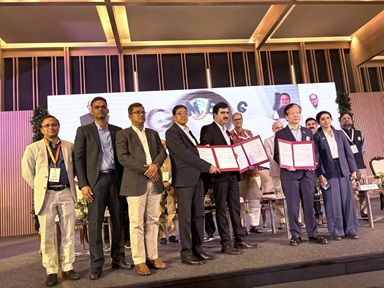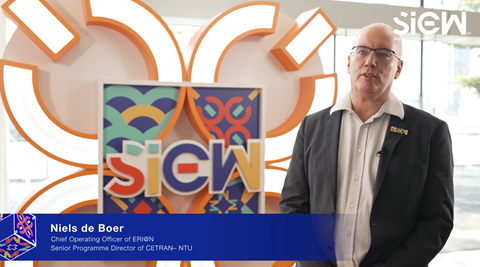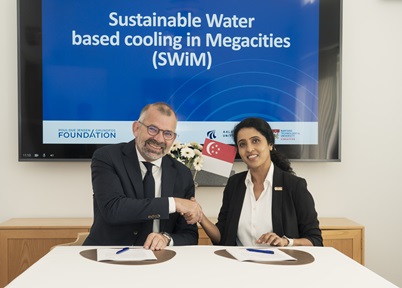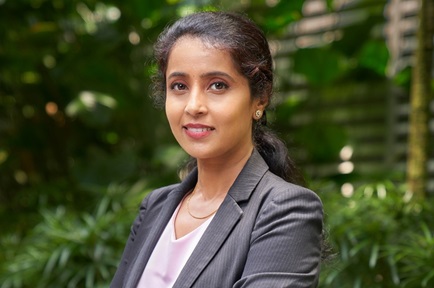Site near Sembawang hot spring could be tapped for geothermal energy: Researchers
First published online at The Straits Times

SINGAPORE - The Republic has a significant geothermal energy resource that could potentially be harnessed as a source of clean energy, researchers have found.
Exploratory studies at a site near the Sembawang hot spring found that the temperature 1.1km underground was 60 deg C to 90 deg C – sufficient to cook a soft-boiled egg. Water temperatures at the hot spring range from 40 deg C to 70 deg C.
This is already hotter than the rock temperatures found at similar depths in many other non-volcanic regions such as Europe and Scandinavia, said Nanyang Technological University’s (NTU) Associate Professor Alessandro Romagnoli, who co-led the study.
The team comprised members from NTU, research centre Tumcreate and infrastructure consultancy Surbana Jurong. Tumcreate is a joint research programme between Technische Universität München (TUM) in Germany and NTU.
The team estimates that the temperature at the site could go up to 200 deg C at a 4km to 5km depth, making geothermal energy a real possibility as a clean energy source, said Prof Romagnoli.
Heat between 30 deg C and 60 deg C can be used for water desalination and fish farming, while that above 90 deg C could be used for district cooling. Temperatures above 150 deg C are suited for electricity and hydrogen generation.
Tumcreate’s lead scientist, Dr Tobias Massier, who co-led the study, said absorption chillers could convert the heat into cool air, and one gigawatt of geothermal power could cover about 12 per cent of Singapore’s current cooling demand.
Geothermal energy refers to heat derived from the earth’s superheated core, which is estimated to be 2,900km below the surface.
Since October 2021, the researchers have been drilling underground at Admiralty Lane up to a depth of 1.1km, collecting rock samples and measuring the temperature at various depths.
This site and the Sembawang hot spring are within a geological area known as the Simpang Granite Pluton, which has granite that has a higher level of heat production.
Granite is known to contain elements such as uranium, thorium and potassium, and has good capabilities in transferring and storing heat.
“This unique characteristic of having a higher temperature gradient, combined with the high heat production of the Simpang granite, contributes to the unusual high heat flow in that area,” said Prof Romagnoli.
Conventional geothermal systems harness heat from hot water and steam from deep beneath the earth’s surface, but Singapore requires systems that tap heat from hot, dry rock – usually done by pumping fluids that can transfer subterranean heat to the surface.
Previous studies showed that Singapore has geothermal potential in Sembawang and Pulau Tekong, which has been gazetted for military use.
Drilling deeper comes with greater technical challenges and is often more expensive, said Prof Romagnoli.
“Exploratory drilling of up to 1km to 2km deep can be conducted with relatively small equipment and small-diameter holes. However, the cost of doing so is only a fraction of drilling the much larger holes needed for production purposes, at around 4km to 5km, where heat is actually extracted from deep underground,” he added.
The team had initially planned to drill to a depth of 1.5km, but had only managed to reach 1.1km due to technical difficulties.
But the preliminary results offer impetus for further exploration to determine the total surface area of hot rock in Singapore, the total amount of heat stored in the rocks and the speed of heat transfer, said Prof Romagnoli.
This data would inform decisions on where to locate geothermal power-generation plants, should the Republic go ahead with it.
In October 2021, the Energy Market Authority (EMA) said that it was exploring the viability of employing geothermal systems in Singapore, and would study the geothermal potential of northern and eastern Singapore. The two areas had been identified for their higher surface temperatures and hot springs.
Land-scarce Singapore could benefit from closed-loop heat extraction systems, which would require a far smaller surface area per unit of power produced than other types of power plants, including ones running on fossil fuel, Prof Romagnoli said.
Pipes installed underground in a loop would transport fluids that transfer heat from the hot granite layers to the surface, where the heat could be used to generate electricity in the power plant.
To maximise the amount of heat extracted for electricity generation, multiple pipes could be installed to reach a wider lateral area underground, he added.
EMA deputy chief executive of energy planning and development Ralph Foong said: “The findings from NTU’s study are a useful basis for us to better understand the potential for geothermal energy to become a key renewable resource for Singapore.
“If proven viable, geothermal energy could contribute to a more sustainable and diversified energy mix. We look forward to collaborating with NTU and other stakeholders to fully assess Singapore’s geothermal potential.”







